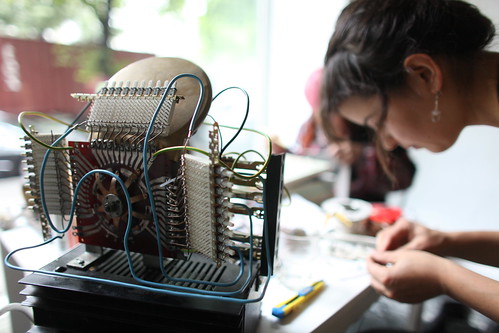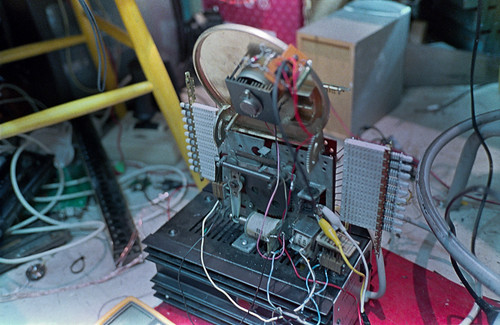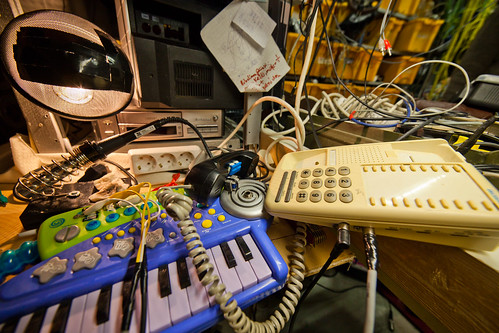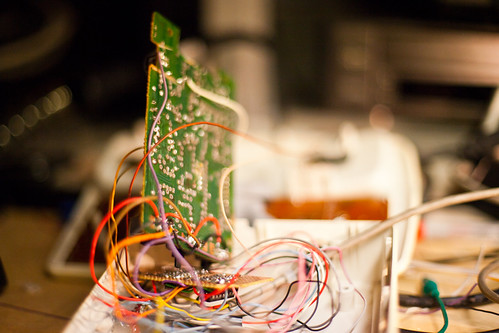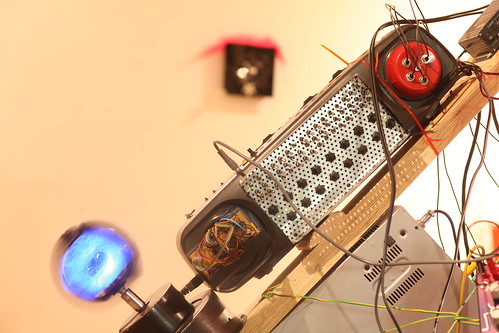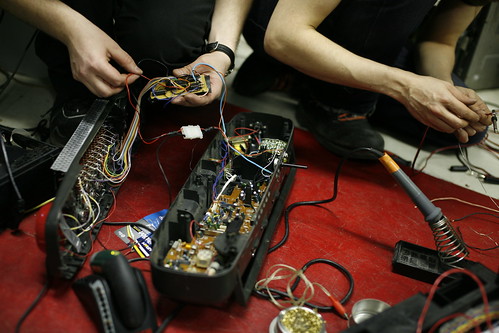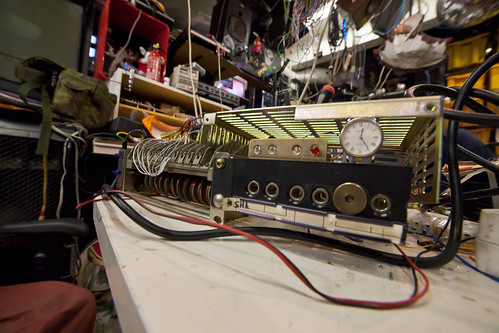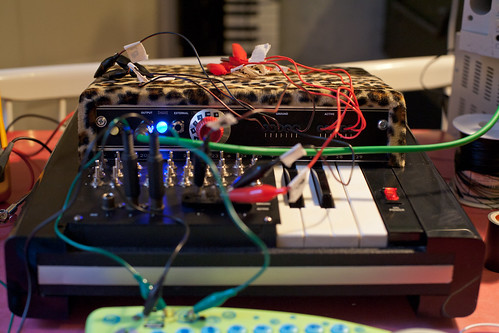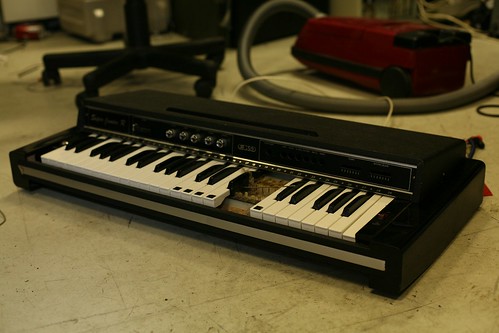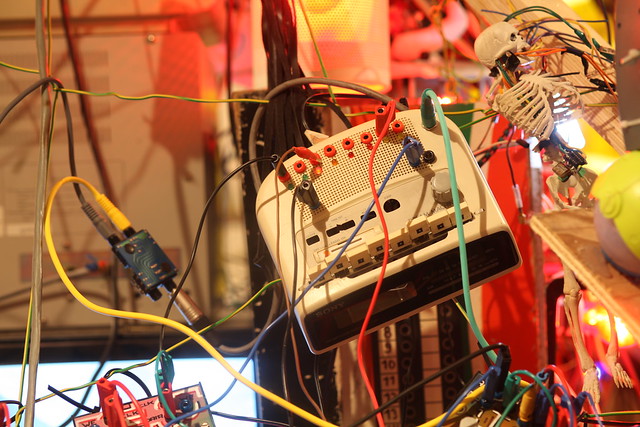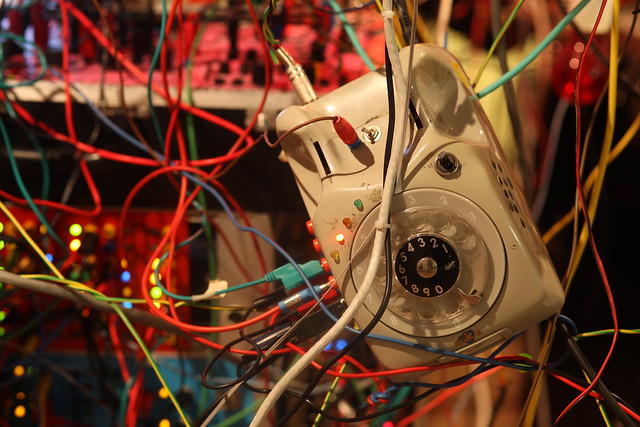
An example of higher-order recycling, this instrument re-recycles casing and some parts from an older disassembled Koelse instrument. Probably whoever invented the word recycling was thinking of something like this when he put the 'cycle' in there.
Ericsson is a sequenced bank of four voltage controlled oscillators. Each oscillator has its own CV in channel. Sequencing the oscillators is controlled either by external clock input or internal voltage controlled clock. There are outputs for each oscillator separately and a combined output.
Due to serendipitous accident in circuit design, this sequencer is able to power itself from CV inputs. Irregularity of this kind of power supply also causes all kinds of interesting glitches, extending Ericsson's musical possibilities.
One important feature still in the to-do list is a pulse input for muting output. Until it is added, Ericsson is a bit too dominant to be used as a lead instrument, but works very well for generating low volume background soundscapes.
